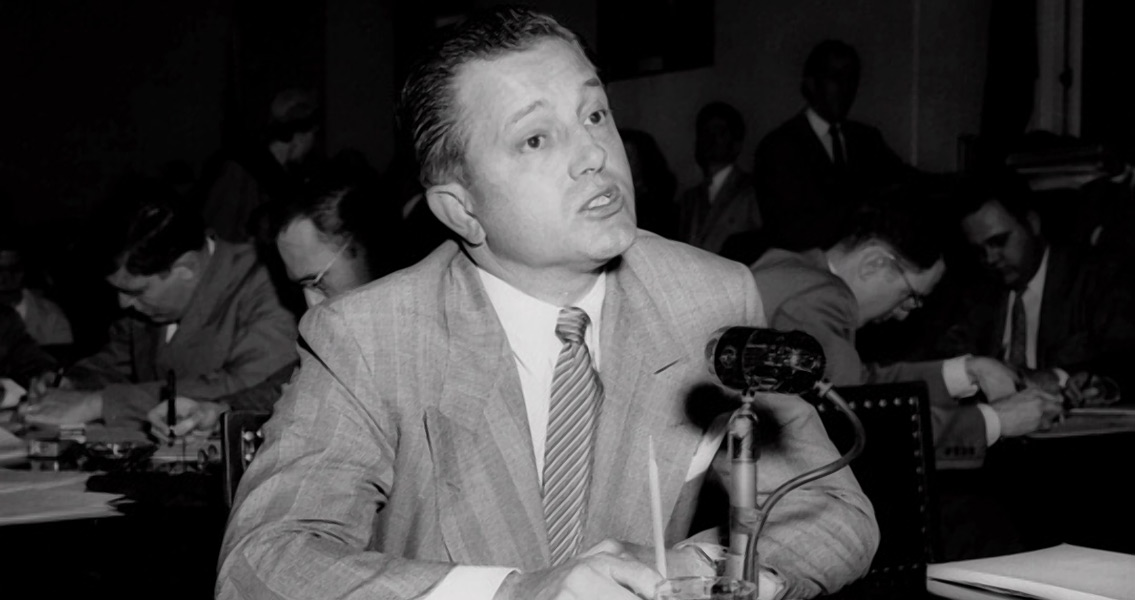<![CDATA["I would prefer, if you would allow me, not to mention other people's names. Don't present me with the choice of either being in contempt of this Committee and going to jail or forcing me to really crawl through the mud to be an informer." - American actor Larry Parks to the House of Un-American Affairs Committee. The House of Un-American Affairs Committee (HUAC) opened its investigation into the American motion picture industry on 20th October, 1947. A symptom of the developing Cold War between the United States of America and the Soviet Union, the hearings served to highlight the dangerous line between self defense and the suppression of personal freedom the United States' government walked in its attempt to prevent Communist infiltration. By 1947 tension between the USA and the Soviet Union was already developing into an intense political rivalry which saw an arms race start between the two super powers. In this tense climate, both became increasingly paranoid that the other would try to create propaganda in their territory to undermine their political stability. Such fears have since been proven to have had foundations, with evidence revealed of both sides' attempts to infiltrate the other with material promoting their own distinct political ideologies - whether American capitalism or Soviet Communism. Founded in the 1930s, the HUAC was created out of concern that German agents sent from Nazi Germany could enter the United States. It set about interviewing members from the American Fascist movement, attempting to determine if they held connections to Nazi Germany, and how extreme their fascist ideas were. With the defeat of Nazi Germany, the HUAC turned its attention to investigating Communist influence in the United States. Hollywood became a particular target because many actors and studio workers had turned towards left wing political organisations during the Great Depression. The motion picture industry's massive cultural influence meant the background of anyone working in it became a matter of interest to the HUAC, for fear that film could be used as a means to subversively spread Communist ideals to the American public. Beginning on 20th October, 1947, some 41 people from the industry, including such household names as studio owners Walt Disney and Jack Warner, and actors such as Gary Cooper, volunteered to be interviewed by the HUAC. They decried the Communist influence in American cinema, and between them went as far as naming some 19 people who they believed held left wing views. Following the voluntary interviews, the HUAC set about interviewing the nineteen people who had been named. Ten of those, Herbert Biberman, Lester Cole, Albert Maltz, Adrian Scott, Samuel Ornitz, Dalton Trumbo, Edward Dmytryk, Ring Lardner Jr., John Howard Lawson and Alvah Bessie, refused to answer any questions. Publicly protesting the investigations, the Hollywood Ten, as they came to be known, claimed that the First Amendment to the US Constitution, which guaranteed freedom of speech and political belief, made the investigation illegal. Their protests fell on death ears, and all ten were sentenced to jail sentences for contempt of Congress. The fate of Larry Parks, quoted above, gives an insight into the methods used by the HUAC, and how eerily similar they were in some ways to those used in the Soviet Union to extract confessions and accusations. Parks, a famous actor, was one of the nineteen named in the original round of interviews. He eventually agreed to speak to the committee, admitting he had joined the American Communist Party in 1941 but left after four years. He initially refused the HUAC's request to name other members of the party, but it was revealed several days later that he was eventually pressured into providing a list of names. Through fear of facing the same fate as the Hollywood Ten, a second round of HUAC investigations in 1951 saw many names offered up by Hollywood actors, directors, writers and other members of the film industry. If those accused refused to be interviewed they were added to a blacklist circulated around all major Hollywood film studios, effectively banning them from employment in Hollywood. In total, over 320 people would eventually be blacklisted. There was some justification to the paranoia the HUAC felt about attempts to spread Communist ideas through American cinema. Edward Dmytryk, one of the Hollywood Ten, was interviewed again in 1951. Facing financial difficulties, he cooperated with the HUAC and named twenty six former members of Communist groups. Even more significantly, he admitted that other members of the Hollywood Ten had put him under pressure to make films which reflected the views of the American Communist Party. The HUAC's investigation fulfilled the target it'd been set by the government: to unearth Communist influence in Hollywood. However, the methods they used to achieve this end, and the contradiction of political freedom their investigations represented, raised serious questions about the tactics used by the American government to protect itself from the Soviet Union. ]]>
"Un-American" Activities in Hollywood
